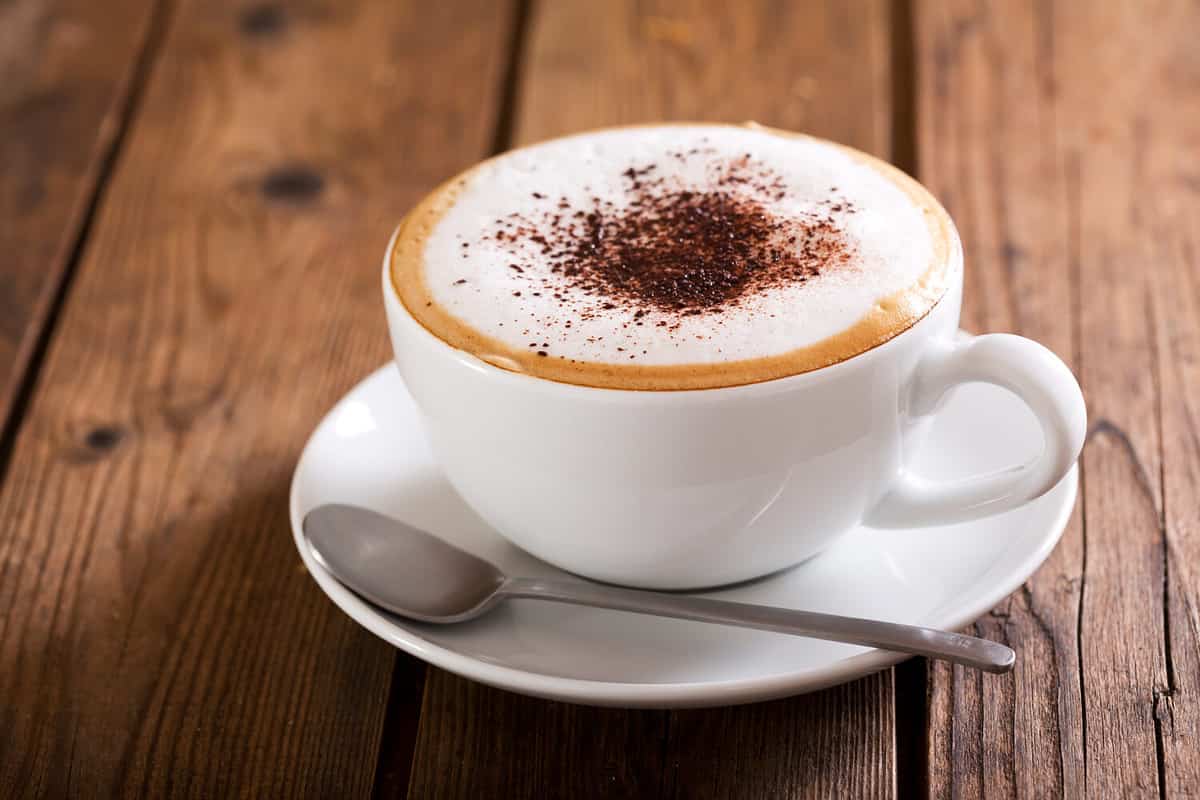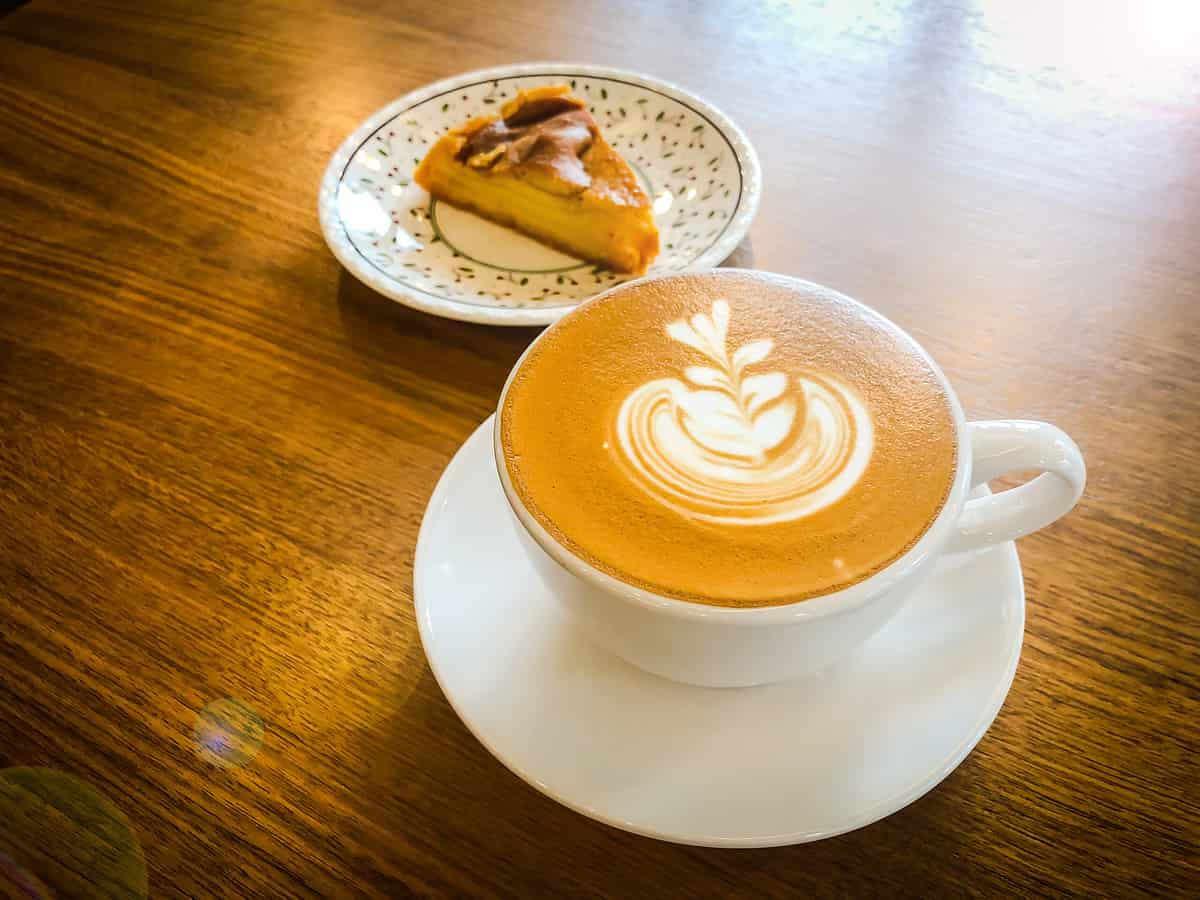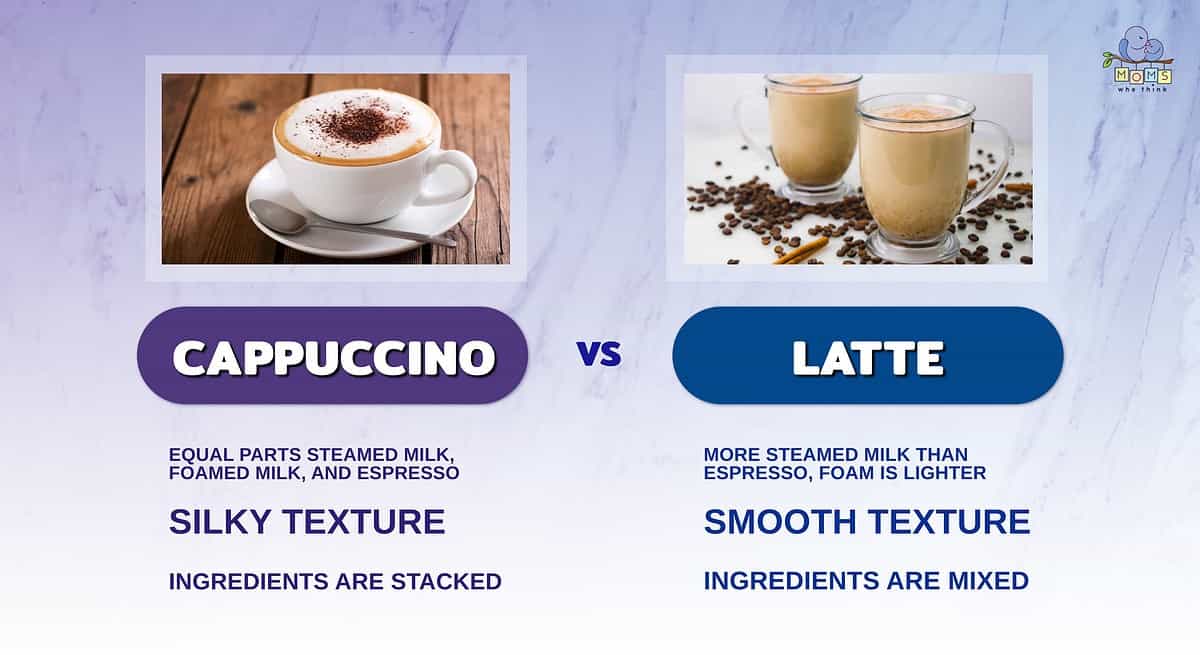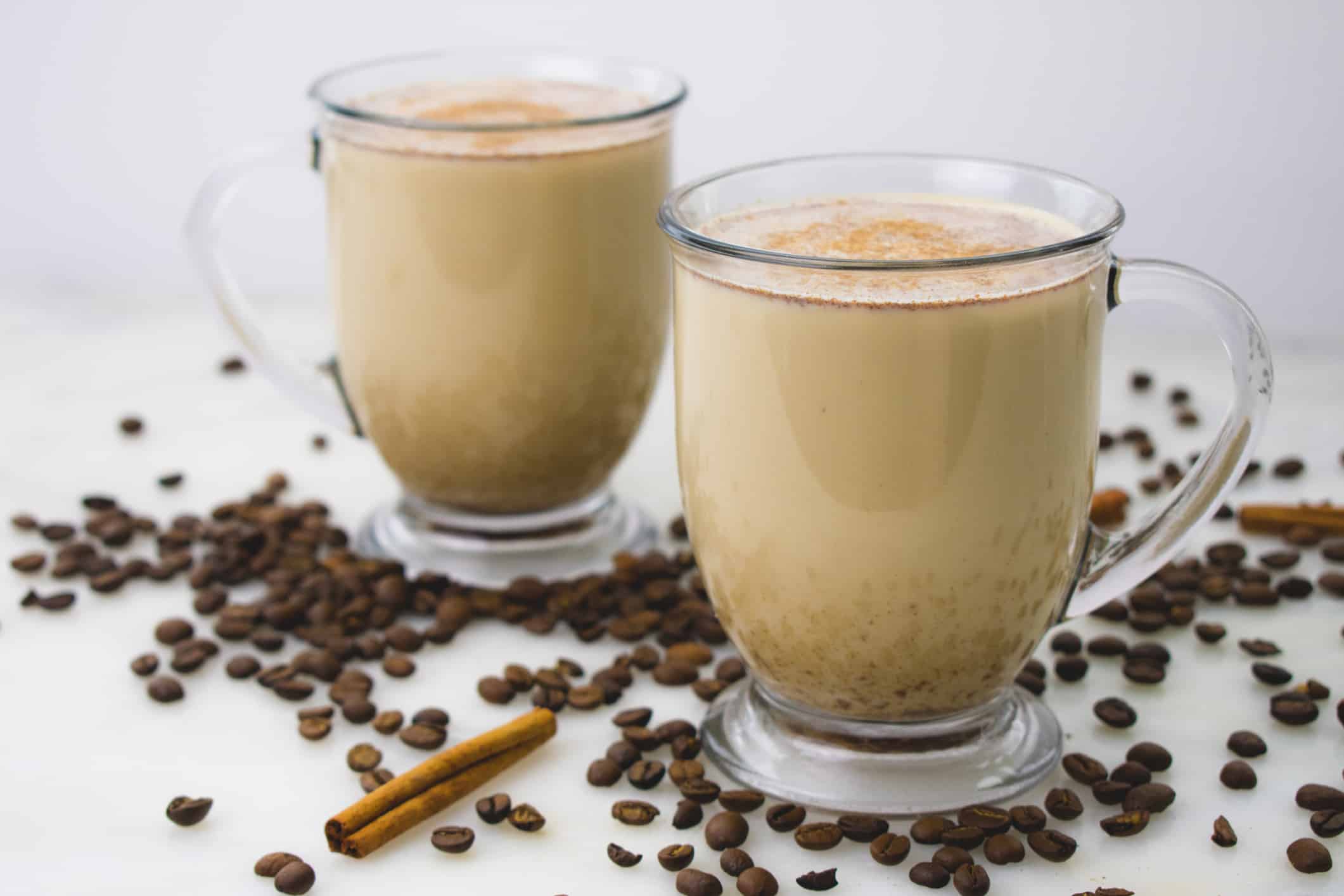When you walk into a coffee shop, the distinguishing aroma of coffee beans and everything in between will undoubtedly greet you. Among the most popular espresso drinks are the cappuccino and latte. However, have you ever thought about the true difference between a cappuccino and a latte?
While these deliciously popular drinks contain the same ingredients, a few differences set them apart. For starters, the main difference between a cappuccino and a latte is in the ratio of the ingredients. More differences include the texture, flavor, and finish of each one.
What is a Cappuccino
A cappuccino is a popular coffee drink and for good reason. The perfect espresso, milk, and foam layers elevate the intense coffee flavor. However, with all the variations of espresso drinks, it can be hard to know what each entails.
A cappuccino is equal parts espresso, steamed milk, and foam. It also has a distinctive layering effect. The first layer is one or two espresso shots when making a cappuccino. After the espresso has been added, the steamed milk is poured on top. This is where the art of coffee comes into play. A large spoon holds the foamy milk back while the steamed milk is poured into the espresso. After the layer of milk has been poured, the leftover foam is scooped on top of the cappuccino. The foam is very thick and light, adding a silky texture.
The ratio of a cappuccino is one-to-one-to-one. For example, if there is 1/2 cup espresso, there will be 1/2 steamed milk and 1/2 frothed foam.
Also, the coffee flavor radiates through in a cappuccino. This is because there is less milk in the drink. While adding some flavoring to a cappuccino is possible, it is usually served in its plain coffee state. This allows the star of the show, the espresso, to shine through.
Coffee drinks come in various states, hot, cold, and even iced. This brings us to the question, can a cappuccino be cold? While possible, a cold cappuccino is less shine-worthy than a hot cappuccino. This is because this espresso drink uses steamed milk, which doesn't taste as good when cold.

©Nitr/Shutterstock.com
Main Ingredients in a Cappuccino
The main ingredients in a cappuccino are steamed milk, foamed milk, and espresso. It has a powerful espresso flavor due to the equal parts ratio of the ingredients.
Sometimes adding flavoring is possible, yet the strong espresso flavor is always the star of the show.
Texture and Finish of a Cappuccino
When it comes to the texture and finish of a cappuccino, it varies from a latte. First, the cappuccino has a very distinct layering distribution. The layering effect and the foamy milk at the top create a silky texture.
The ingredients will mix as a person drinks the cappuccino, adding to the smooth texture and intense flavor.
What are the Calories and Nutritional Profile of a Cappuccino
One of the more popular questions regarding coffee drinks is, how many calories is it? The nutritional profile of a cappuccino varies from a latte.
For starters, because it has less milk, it has fewer calories than a latte.
If we are to look at a 16-ounce cappuccino, it would have the following:
| Calories | 130 |
| Protein | 8 grams |
| Fat | 5 grams |
| Carbs | 13 grams |
The History of a Cappuccino
A cappuccino has been around for hundreds of years. The origin of cappuccino that we know today is from Italy, but at first, it had become more prevalent in a Viennese coffee house. The name cappuccio came from the fact that the drink was similar in color to the capuchin monks' robes. The word cappuccio means hood.
Fast forward to Italy, where the current name cappuccino came about. It was around the 1900s and during the world wars that this espresso drink took root. Around this time, the espresso machine became popular, and making a cappuccino became easier.
What is a Latte?
A latte has the same ingredients that a cappuccino does. However, the ratio of these ingredients is what sets it apart.
First, a latte begins like a cappuccino, with one or two espresso shots. The espresso is then covered with steamed milk. The ratio of espresso to steamed milk in a latte is one to two.
The differences continue from here. When making a latte, the espresso, and steamed milk are mixed together, unlike a cappuccino, where they are stacked.
The top layer is also foam. However, this foam is a very thin foam that goes on top.
A latte is much sweeter than a cappuccino because it contains more milk. The milk adds to the milkier texture as well. While cappuccinos don't have the same effect while cold, lattes are delicious in both forms, hot and cold.
Another key characteristic that sets lattes apart is the fun latte art. This is something that can't be done well with a cappuccino because the foam is too thick.

©PLAY STUDIO/Shutterstock.com
Main Ingredients in a Latte
The main ingredients in a latte are the same as a cappuccino. They are espresso, steamed milk, and a light layer of foam.
What sets a latte apart is the ratio. There is more steamed milk than espresso, and the foam is lighter, leading to a smooth texture.
What are the Calories and Nutritional Profile of a Latte
The quantity of steamed milk in a latte means more calories than in a cappuccino. When looking at a 16-ounce latte, it has the following:
| Calories | 206 |
| Protein | 13 grams |
| Fat | 8 grams |
| Carbs | 20.5 grams |
The History of a Latte
Although the combination of milk and espresso has been around for quite a long time, centuries even, the modern caffe latte is a relatively recent invention. It began in America and has gained popularity over the last twenty years.
It is essential to remember the correct names to use in Italy. If you were to ask for a latte, you would be given a cup of milk because that is what a latte means. The correct term would be the cafe latte, which means coffee milk.
Different Flavor Variations of Cappuccinos and Lattes
A cappuccino has a very distinct and strong espresso flavor. This is due in part to the ratio of espresso and milk. With every cappuccino, it doesn't need much flavoring, especially if you enjoy the intense coffee flavor. However, it can sometimes come in flavor variations, including cocoa powder.
A latte has a very milky flavor, which means flavor can shine through when added. Some very popular flavors to add to a latte are:
- Vanilla
- Hazelnut
- Mocha
- White chocolate
- Caramel
- Sugar cookies
- Peppermint
- Spiced pumpkin
- Orange cream
When choosing a coffee drink, sometimes the high-calorie content can be a downer. However, if you enjoy a sharp espresso cappuccino or a delicious latte, there are a few healthier alternatives if you don't care for the calorie count. Try replacing the steamed milk with coconut, oat, or almond milk. The flavor only varies slightly!

©Alie04/Shutterstock.com
One Last Note

- One of the major differences between a cappuccino and a latte is the ratio of ingredients. A cappuccino has equal amounts of all ingredients, while a latte has more steamed milk than espresso. Cappuccinos will have a dominating espresso flavor, while the flavor of a latte will be smoother and more milky.
- Cappuccinos have a silky texture, owing to the way its ingredients are poured and measured. Lattes have a smooth texture, owing in part to the increased amount of steamed milk.
- The other major difference between these two drinks is the way the ingredients are poured. In a cappuccino, the ingredients are stacked, while they're mixed in a latte.
Cappuccinos and lattes are delicious espresso drinks with the same ingredients yet vary greatly. A cappuccino has a layering effect and a one-to-one ratio of the ingredients. The ratio allows the espresso flavor to dominate the drink while still carrying a silky texture. Conversely, a latte has more steamed milk than espresso, and the ingredients are all mixed together.
On the top of both coffee drinks sits cream. A latte has a thin layer of cream that baristas can get creative with, adding beautiful latte art. A cappuccino, on the other hand, has thick foamy cream.
Regardless of which drink you prefer, these coffees are delightful and delicious to coffee lovers worldwide!
The image featured at the top of this post is ©iStock.com/Candice Bell.

